Old Muscat in Oman
Explore Old Muscat, Oman, a historic quarter rich in tradition. Discover its strategic coastal past, Portuguese forts, Al Alam Palace, and the National Museum. Immerse yourself in authentic Omani culture on the Muttrah Corniche and at the vibrant Old Souk Muscat.
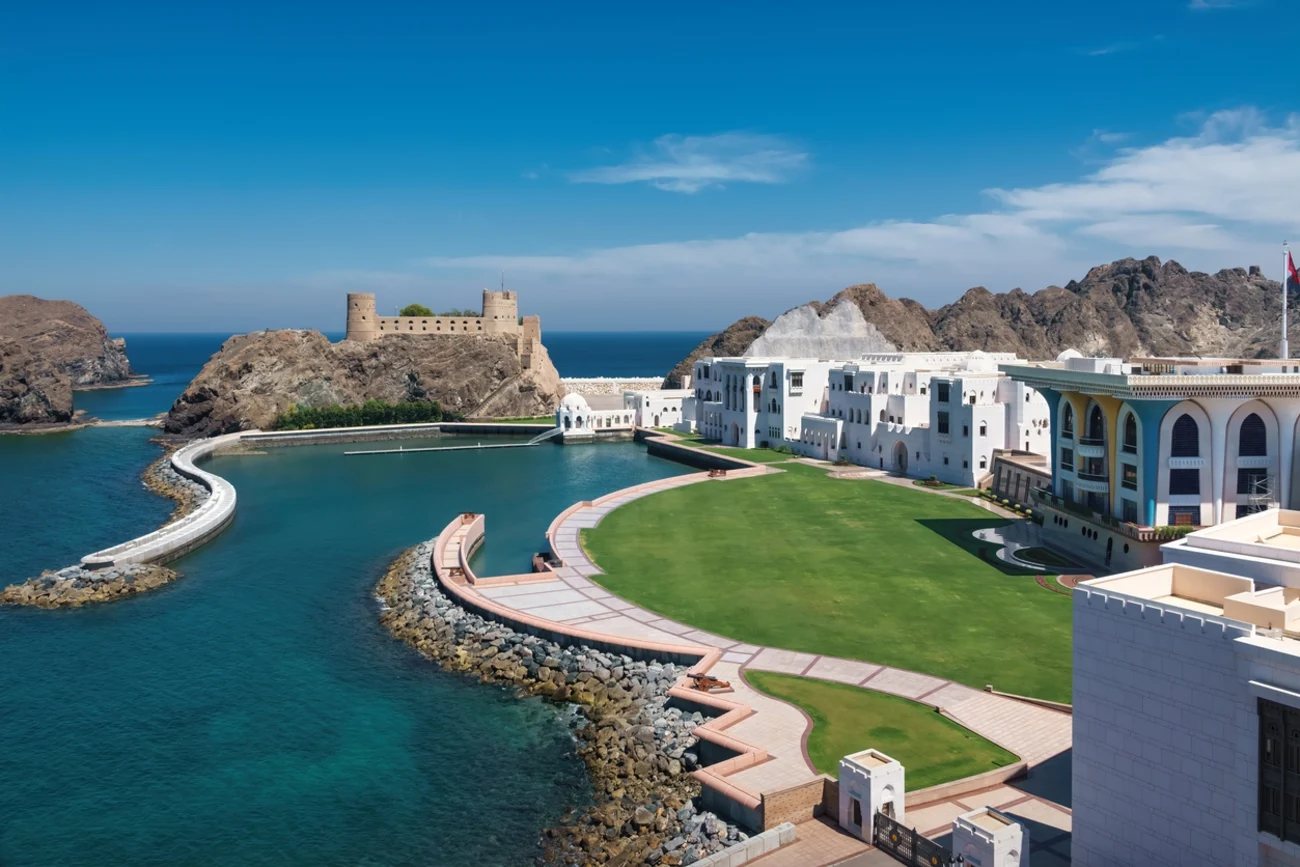
Visitors exploring Old Muscat after nightfall during the mid-20th century faced a peculiar legal requirement—they needed to carry lanterns to navigate the streets. This remarkable historical regulation speaks volumes about the storied past of Old Muscat, the ancient heart of Oman's capital that lies distinctly separated from its modern counterpart by imposing coastal mountains. Round-towered walls constructed in 1625 once encircled this historical enclave, standing guard over centuries of commerce and culture.
The historical significance of Old Muscat stretches back millennia. The Greek geographer Ptolemy acknowledged this settlement as early as the 1st century CE, marking it on ancient maps as a noteworthy location along the Arabian coastline. Modern visitors wandering through the sun-baked streets encounter an extraordinary blend of historical marvels. The skyline reveals commanding Portuguese-built fortifications perched atop rocky outcrops, while the flamboyant contemporary Islamic architecture of Al Alam Palace creates a striking visual contrast below.
Maritime trade defined Old Muscat's prominence throughout history. The natural harbor provided exceptional shelter for vessels plying the Indian Ocean trade routes, while abundant fresh water sources made it an ideal provisioning point for long-distance ships. The city flourished as a commercial nexus where goods, ideas, and cultures converged.
Cultural heritage flourishes throughout Old Muscat's attractions. Bait Al Zubair Museum houses extraordinary collections that illuminate Omani traditions—intricately crafted khanjars (ceremonial daggers) with curved blades and ornate handles demonstrate exceptional metalworking skills, while traditional garments reveal the artistic sensibilities that defined Omani identity across generations. These artifacts serve as tangible connections to customs and craftsmanship that have shaped Omani society for centuries.
The Historical Roots of Old Muscat
The City's Strategic Coastal Location
Old Muscat occupies a remarkable position between the Persian Gulf and the Indian Ocean, functioning as a natural harbor for maritime travelers across centuries. The harbor stretches approximately 700 meters in length, providing vessels with extraordinary protection due to its mountainous surroundings. Ships entering this natural sanctuary found themselves sheltered from hostile forces by land approaches that proved notoriously difficult to navigate, while towering cliffs created effective barriers against punishing winds.
The strategic importance of Old Muscat extended well beyond its defensive geography. Merchant vessels traversing established trade routes discovered an invaluable resource—fresh water flowing directly from mountain springs, allowing crews to replenish vital supplies before continuing their arduous journeys. This dual offering of security and essential resources elevated the harbor to preeminent status throughout the Indian Ocean region. Merchants sought its protective embrace while military powers coveted control of this maritime gateway.
Portuguese Influence and Fortifications
Portuguese forces arrived on Muscat's shores in 1507, forever altering the trajectory of the city's history. Admiral Afonso de Albuquerque commanded a modest yet formidable fleet of just six ships carrying approximately 500 men when they conquered the coastal settlements. The initial peaceful surrender of Muscat dissolved into resistance upon the arrival of reinforcements, triggering a ruthless Portuguese response—a brutal assault that left most inhabitants dead and the town thoroughly plundered.
Portuguese occupation between 1507 and 1650 brought dramatic changes to Muscat's defensive landscape. The colonizers constructed two monumental fortresses that continue to define the city's skyline:
- Fort Al Jalali (originally Forte de São João): Constructed following Ottoman attacks in 1582 and completed between 1586-1588
- Fort Al Mirani (originally Forte do Almirante): Regarded as the more significant fortress and utilized as the governor's residence during scorching weather periods
Portuguese dominion eventually collapsed in the mid-17th century when Omani tribal forces successfully expelled the foreign occupiers. Nevertheless, Portuguese architectural heritage endures in these magnificent fortifications that stand watch over the harbor from commanding positions atop rocky promontories.
Old Laws and Traditions that Shaped Daily Life
Daily existence in Old Muscat followed distinctive regulations that reflected both security imperatives and deeply held cultural values. Protective walls featuring round towers, constructed in 1625, enclosed the city along its western and southern boundaries. These imposing structures served practical governance functions beyond mere ornamentation.
Nighttime brought particularly fascinating restrictions to Old Muscat. City gates would close three hours after sunset, and authorities required any person traversing the streets after this time to carry a lantern. These measures maintained order and security throughout the labyrinthine passageways and narrow streets of the old town.
Public behavior faced additional constraints throughout Old Muscat. Authorities prohibited smoking on main thoroughfares, while even musical performances in public spaces fell under strict bans. These traditions molded Old Muscat's distinctive character, fostering an environment marked by order and reverence—a stark contrast to the experiences awaiting modern visitors. The social fabric woven through these regulations reveals a society valuing structure, propriety, and communal well-being above individual expression.
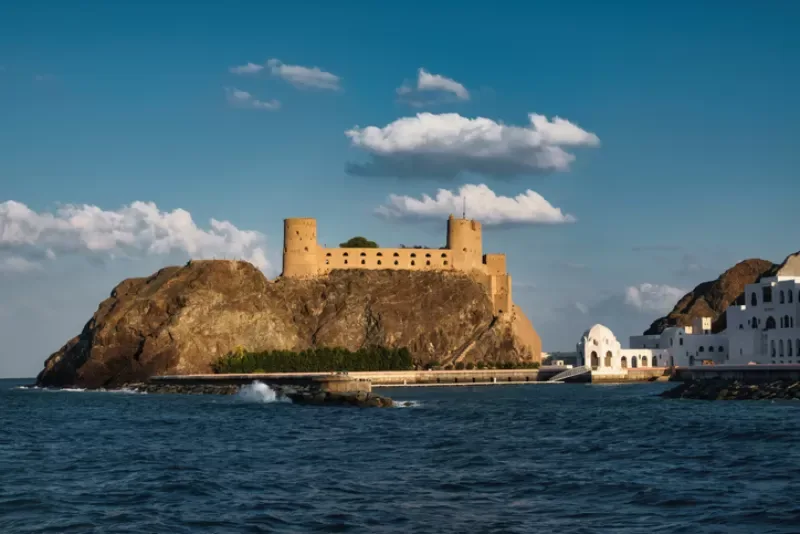
Top Landmarks to Visit in Old Muscat
Old Muscat harbors architectural treasures that stand as a testament to the city's storied past and cultural evolution across centuries. These landmarks provide visitors with tangible connections to the forces that shaped this historic port city.
Al Alam Palace and its Surroundings
Al Alam Palace commands attention with its bold architectural statement—striking gold and blue columns arranged in a flamboyantly contemporary Islamic style. Completed in 1972, this ceremonial residence serves the Sultan of Oman during state occasions and diplomatic receptions. While the interior remains closed to public access, visitors gather near the ornate gates to photograph the distinctive façade. The palace occupies a dramatically framed position between twin Portuguese fortifications, creating an arresting visual juxtaposition of architectural periods. Maritime enthusiasts discover unique vantage points when viewing this royal residence from harbor waters, where the full panorama of palace and fortifications unfolds against the mountain backdrop.
Fort Al Jalali and Fort Al Mirani
Twin sentinels of stone rise dramatically from rocky promontories flanking Muscat's harbor entrance. Fort Al-Jalali, constructed on the eastern headland by Portuguese forces during the 1580s, underwent careful restoration in 1983. This fortress now houses a private museum displaying Omani cultural artifacts—ancient cannons, weathered muskets, historical maps, and other relics that illuminate the sultanate's past. Across the harbor mouth stands Fort Al-Mirani, historically significant as Oman's first fortification equipped with cannon defenses. Local narratives recount how this fortress featured prominently in expelling Portuguese occupiers during the mid-17th century through an ingenious stratagem involving a merchant's daughter—a tale that blends historical fact with cultural mythology.
Muscat Gate Museum
The Muscat Gate Museum occupies a symbolically powerful location within the original fortress walls along Al Saidiya Street. Inaugurated in January 2001, this institution presents a chronological narrative spanning from Neolithic settlements to contemporary Oman [18, 19]. Particularly illuminating exhibitions detail Muscat's historical infrastructure—ancient water springs, intricate underground channels, bustling souqs, traditional dwellings, houses of worship, harbor facilities, and defensive structures. The museum's strategic position at the former city gates physically marks the boundary of old Muscat, providing geographical context for understanding the settlement's historical development.
Bait Al Zubair Museum
Nestled within old Muscat's heart, Bait Al Zubair houses the region's most distinguished privately assembled collection of Omani artifacts, representing centuries of cultural development. This cultural complex encompasses five distinct structures—Bait Al Bagh, Bait Al Dalalil, Bait Al Oud, Bait Al Nahdhah, and Gallery Sarah—complemented by gardens featuring traditional landscape elements. Operating daily except Fridays between 9:00 AM and 5:00 PM, the museum showcases ethnographic treasures that demonstrate specialized craft traditions central to Omani cultural identity. The institution's architectural excellence received formal recognition in 1999 through His Majesty Sultan Qaboos' Award for Architectural Excellence.
The National Museum of Oman
Established in 2013, the National Museum stands as the Sultanate's preeminent cultural repository. The purpose-designed structure encompasses 13,700 square meters, with 4,000 square meters dedicated to fourteen meticulously curated permanent galleries. Museum collections include 5,466 cataloged objects supplemented by 43 digital immersive experiences that contextualize Omani heritage. Progressive accessibility measures distinguish this institution as the Middle East's first museum implementing Arabic Braille script for visually impaired visitors.
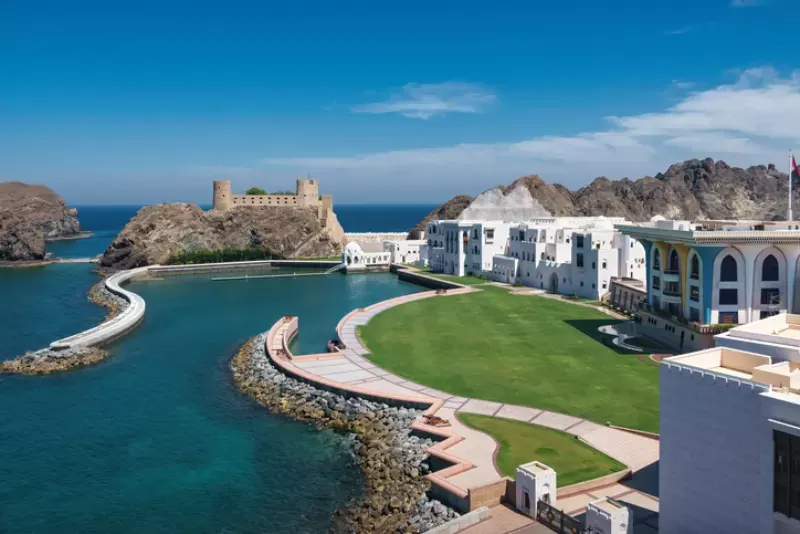
Exploring the culture and heritage
Traditional Omani architecture
Traditional buildings throughout Old Muscat reveal architectural mastery that seamlessly marries practical necessity with visual splendor. These distinctive structures embody a fascinating fusion where Islamic architectural principles blend with Persian, Indian, and East African design elements. The genius of Omani architecture becomes apparent through its climate-responsive features—brilliant white walls deflect the harsh Arabian sun, naturally cooling interior spaces. Local materials dominate these constructions, with craftsmen skillfully employing limestone, clay, and palm fronds in ways perfected across generations.
Defensive considerations permeate architectural design throughout Old Muscat's historic quarters. Centuries of external threats necessitated fortified structures characterized by robust forms and strategically positioned elements, though these practical considerations never diminished the beauty of intricate decorative motifs adorning doorways and interior spaces. Central courtyards feature prominently in traditional Omani homes, serving dual functions—creating natural ventilation channels while providing secluded gathering spaces where family life unfolds sheltered from public view.
Artifacts and exhibits in local museums
The National Museum presents an archaeological timeline stretching across an astonishing two million years of human presence on the Omani Peninsula. Meticulously arranged galleries guide visitors through three pivotal archaeological periods—Early Paleolithic, Bronze Age, and Iron Age—each represented through carefully preserved artifacts. Particularly intriguing are the mysterious relics recovered from Sullāt excavations, which reveal evidence of an ancient snake cult whose rituals remain shrouded in historical mystery.
Bait Al Zubair Museum houses what many experts consider the most impressive privately assembled collection of Omani cultural treasures, spanning multiple centuries of artistic and cultural development. This remarkable complex encompasses five distinct buildings where ethnographic treasures demonstrate specialized crafts passed through generations—skills that became defining elements of Omani societal identity and cultural expression.
Religious coexistence and historic temples
Religious plurality stands among Old Muscat's most remarkable cultural features. The Shiva temple complex represents one of the Middle East's oldest Hindu religious sites, where three distinct shrines—Shri Adi Motishwar Mahalev, Shri Motishawr Mahadev, and Shri Hanumanji—draw between 3,500 and 6,000 devotees each week for traditional worship practices.
Oman's religious tolerance extends beyond Hinduism, evidenced by four recognized Christian church campuses where Protestant, Catholic, and Orthodox Christian communities share worship spaces. This remarkable coexistence reflects centuries of cultural exchange facilitated by maritime trade networks. Each religious community maintains its distinctive traditions while contributing unique threads to the rich tapestry of Omani cultural heritage—a living testament to peaceful pluralism rarely seen elsewhere in the region.
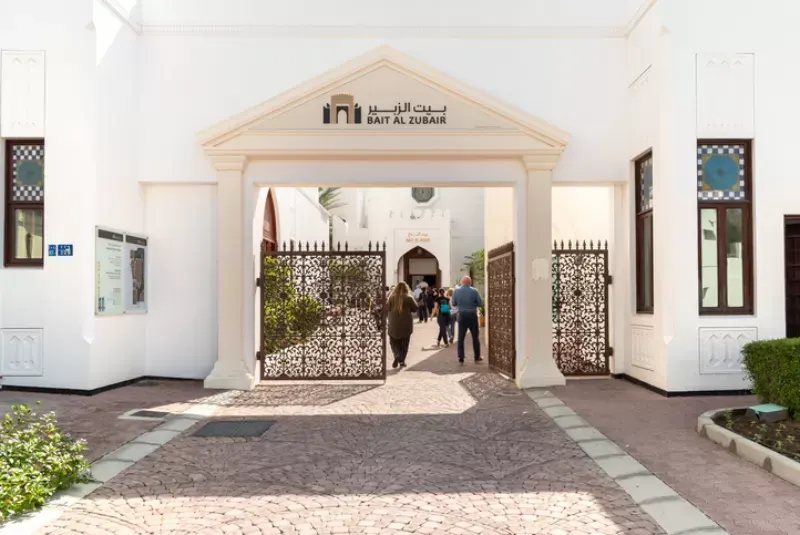
Customize Your Dream Vacation!
Get in touch with our local experts for an unforgettable journey.
Plan Your TripWhat to do in Old Muscat today
Present-day Old Muscat marries centuries of rich history with vibrant contemporary experiences. Beyond architectural wonders and historical monuments, this ancient quarter offers sensory delights, cultural immersion, and spectacular vistas waiting to be discovered.
Walking along the Muttrah Corniche
Muttrah Corniche serves as the perfect gateway to Old Muscat's treasures. This spectacular 1.8-mile waterfront promenade curves gracefully alongside the harbor where His Majesty Sultan Haitham bin Tarik's stately dhow remains anchored. Strollers encounter charming fountains, meticulously maintained gardens, and restaurants serving everything from authentic Omani cuisine to international fare.
Sunset transforms this promenade into a magical tableau as fading daylight washes traditional Omani architecture in golden luminescence, creating unparalleled photographic opportunities. The corniche beautifully showcases Oman's architectural evolution—intricate latticed buildings and dignified mosques stand testament to the area's historical significance as a vital port in the medieval maritime spice trade.
Each step along this waterfront connects visitors directly to Muscat's seafaring heritage while offering refreshing sea breezes and dramatic mountain backdrops.
Shopping at the Old Souk Muscat
Mutrah Souq, known locally as Souq Al-Dhalam ("market of darkness"), earned its evocative name from the narrow, winding alleys that traditionally required lamps for navigation. Dating to the 1820s, this stands among the oldest marketplaces in the Arab world, offering authentic experiences unavailable elsewhere.
Visitors locate the souq entrance opposite the corniche, marked distinctively by bold lettering on a salmon-colored pavilion crowned with a gleaming dome. Within these labyrinthine passages, merchants offer treasures including Dhofar frankincense (widely considered the world's finest), aromatic spices, handcrafted Omani silver pieces, intricately woven textiles, and traditional khanjars—ceremonial daggers prominently featured on Oman's national flag.
Haggling constitutes an essential part of the souq experience, though visitors should approach this traditional practice with appropriate respect. The market welcomes shoppers from 9 am to 1 pm and again from 4 pm to 10 pm, with early evening hours providing ideal exploration conditions.
Photography spots and scenic views
Old Muscat presents extraordinary photographic possibilities with remarkably sparse crowds compared to similar historical destinations worldwide. Photographers often discover they have magnificent scenes entirely to themselves.
The Old Muscat City View point rewards visitors with sweeping panoramas encompassing the rugged coastline, the imposing Al Hajar Mountains, and the azure expanse of the Arabian Sea. Serious photographers should schedule visits during early morning or late afternoon hours, avoiding midday heat while capturing the dramatic lighting conditions of sunrise or sunset.
Multiple vantage points along Muttrah Corniche offer exceptional compositional opportunities featuring the harbor, time-honored architecture, and the surrounding natural landscape. Those wishing to photograph local residents should always request permission beforehand—a courtesy generally appreciated by Omanis, many of whom speak English fluently.
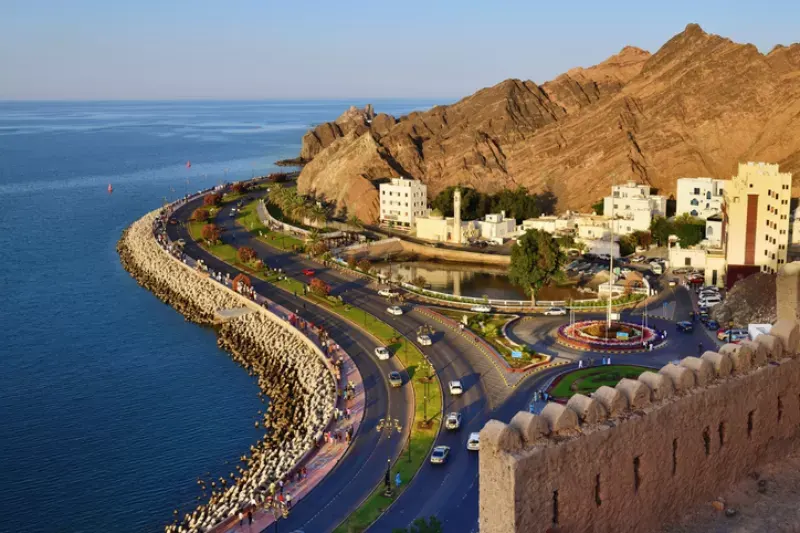
Concluding your journey through Old Muscat
Old Muscat stands before visitors as an enduring chronicle of Oman's historical narrative, where centuries-old traditions and maritime significance have sculpted an unparalleled destination. The historic quarter reveals an architectural symphony where Portuguese military ingenuity blends seamlessly with elegant Omani design sensibilities, framed perfectly by rugged coastal mountains meeting the shimmering Gulf of Oman.
Fort Al Jalali and Fort Al Mirani rise as twin guardians above the harbor, their weathered stones narrating tales of conquest, defense, and eventual liberation. These formidable structures join the ceremonial Al Alam Palace with its distinctive gold and blue columned façade in offering a silent testimony to different epochs of Omani history. Cultural repositories such as Bait Al Zubair and the National Museum safeguard treasures spanning countless millennia, from primitive stone tools to exquisite ethnographic collections reflecting Oman's multifaceted heritage.
Moments spent along the Muttrah Corniche reward the curious traveler with spectacular vistas while forging tangible connections to Muscat's seafaring ancestry. The atmospheric labyrinth of old souk Muscat beckons with aromatic frankincense considered the world's finest, gleaming Omani silverwork, vibrant textiles, and ceremonial khanjars. Here, the ancient art of negotiation continues through respectful haggling, binding present-day visitors to generations of merchants who traded along these same narrow passageways.
Modern Muscat may have expanded into a bustling metropolis approaching two million inhabitants, yet its historic heart preserves its distinct essence and allure. Visitors planning their itinerary should allocate generous time to absorb the singular atmosphere of this ancient port, where nightfall once brought closed gates and where lantern light guided late travelers through darkened streets.
Old Muscat transcends mere sightseeing or shopping opportunities. This remarkable district serves as a living bridge to centuries of cultural exchange, religious tolerance, and architectural achievement. The discerning traveler discovers not simply another tourist destination but encounters instead a profound connection to Oman's enduring legacy—a heritage that continues to captivate and educate those fortunate enough to walk its storied paths.
The top landmarks in Old Muscat include Al Alam Palace, Fort Al Jalali, Fort Al Mirani, Muscat Gate Museum, Bait Al Zubair Museum, and the National Museum of Oman. These sites offer a rich glimpse into Oman's history and culture.
The Muttrah Souq, also known as Old Souk Muscat, is open from 9 am to 1 pm and 4 pm to 10 pm. Early evening is an ideal time to explore the market, allowing you to experience its vibrant atmosphere and cooler temperatures.
Photography is generally allowed and encouraged in Old Muscat. The area offers numerous scenic spots, especially along the Muttrah Corniche and at various lookout points. However, when photographing locals, it's respectful to ask for permission first.
In Old Muscat's souq, you can find authentic Omani souvenirs such as high-quality frankincense from Dhofar, traditional spices, Omani silver crafts, textiles, and khanjars (traditional daggers featured on Oman's national flag).
Old Muscat maintains its historical character through the preservation of traditional Omani architecture, ancient fortifications, and cultural institutions like museums. The area's layout, including narrow alleys and traditional buildings, continues to reflect its rich past as a strategic port city.











